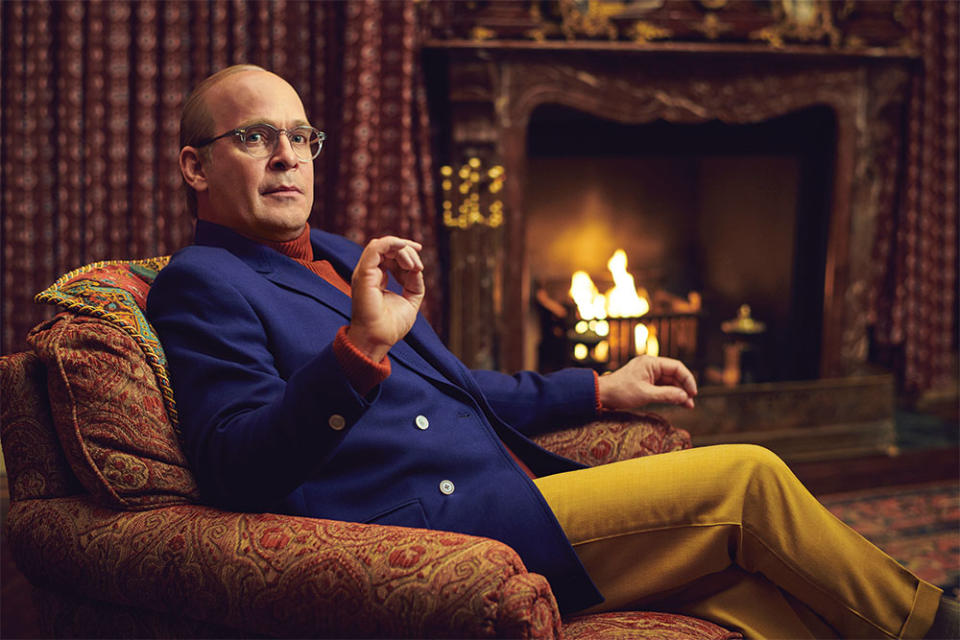The Matchy-Matchy Glam Styles of Manhattan’s Society Swans in ‘Feud: Capote vs. The Swans’
- Oops!Something went wrong.Please try again later.
- Oops!Something went wrong.Please try again later.
- Oops!Something went wrong.Please try again later.
- Oops!Something went wrong.Please try again later.
- Oops!Something went wrong.Please try again later.
- Oops!Something went wrong.Please try again later.

Babe Paley, Slim Keith and C.Z. Guest are a few of the iconic jet-set women who conjure images of wealth, glamour, high society … and Truman Capote. Known as “The Swans,” they dominated New York society, with the acclaimed author of Breakfast at Tiffany’s a part of their inner circle.
Ryan Murphy’s second installment of his Feud anthology, FX’s Feud: Capote vs. The Swans centers on the author’s complex relationship with the socialites, which was upended with his 1975 Esquire article “La Côte Basque, 1965.” Capote’s exposure of their secrets — including intimating that Babe Paley’s husband, CBS’ Bill Paley, had an affair with the wife of New York’s governor — led to a fallout and Capote’s subsequent tumble off the Manhattan social ladder.
More from The Hollywood Reporter
How Gus Van Sant Earned His Rep as "The Mellowest Man in Hollywood"
Events of the Week: 'Expats,' 'Feud: Capote vs. the Swans' and More
Tom Hollander Says Tom Holland's Box Office Bonus for Marvel Was Accidentally Sent to Him
“Everything had to have a feeling of wealth and glamour. Everything was perfectly groomed and polished,” says Lou Eyrich, the series’ costume designer, who has worked with Murphy for 24 years. “Every pair of shoes, every purse had to match. Presentation was everything, and their clothes had to present they were of that society.”
Since costume design is about narrative storytelling, perhaps Paley (played by Naomi Watts) sums it up best when she says, “We see the importance of presentation. Underneath, it’s an act.”
Eyrich further explains, “For me, it was like all the women were fragile on the inside and had to appear to the world that they had it all together and were powerful in society as women. Many ended up in relationships with no power, husbands having affairs and moving on to the next wife.”
Capote’s favorite Swan, Paley was known for her tailored looks from Mainbocher, Givenchy, Dior and Balenciaga in the ’50s to ’60s and Halston and Bill Blass in the ’70s. “For Babe, we had a cheat sheet that was simple, chic, elegant and not showboating,” says the designer, who created a wardrobe for Watts that’s a mix of vintage and custom.

Keith (Diane Lane) was a no-frills California girl who favored Oscar de la Renta, Bill Blass and a less-is-more approach. “She was more masculine, and Diane is more feminine,” says Eyrich, “so we cheated and found a way to give her style with suits, dresses and boots.”
Tom Hollander plays Capote, and the cast is rounded out by Chloë Sevigny as Guest, Calista Flockhart as Lee Radziwill, Demi Moore as Ann Woodward and Molly Ringwald as Joanne Carson, the wife of Johnny Carson.

For a particularly crucial scene — Capote’s famed Black and White Ball, aka the party of the decade, held at the Plaza Hotel in 1966 — Eyrich teamed with fashion designer Zac Posen. A deep dive into research included consulting the sketches of illustrator Joe Eula, Ron Galella photos and some rare VHS footage of a CBS recording of the entire ball. Posen dressed an array of the socialites who attended the ball.
![The series re-creates Truman Capote’s famed Black and White Ball. “Ryan [Murphy] advised me I didn’t have to re-create history as it’s all about telling the right story,” says fashion designer Zac Posen.](https://s.yimg.com/ny/api/res/1.2/n9sXuSZD6fXGMMY4fl3VNg--/YXBwaWQ9aGlnaGxhbmRlcjt3PTk2MDtoPTcxOA--/https://media.zenfs.com/en/the_hollywood_reporter_217/9c12ecfff4cce17fa1aefb29457d828b)
Research indicated Paley wore a red crimson lining under her dress (“perhaps as a symbol of her rebellion,” says Posen); the designer kept the red lining but traded in her fur for a grand entrance-making opera coat “that opens as if it had two swan wings.” Posen made a dress of chiffon “that looked like sparrow wings” for Woodward, and in further keeping with the bird symbolism, Posen says, “The Black and White Ball masks are like evil aquatic birds.”
Posen aptly notes, “It was the Met Gala of its time.”

This story first appeared in the Jan. 26 issue of The Hollywood Reporter magazine. Click here to subscribe.
Best of The Hollywood Reporter

